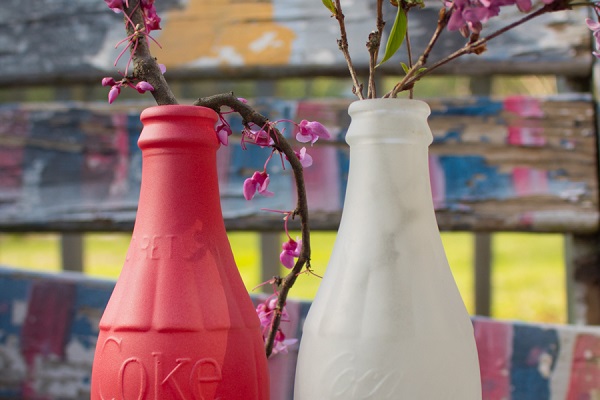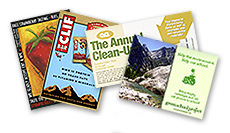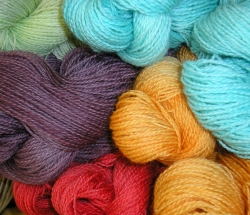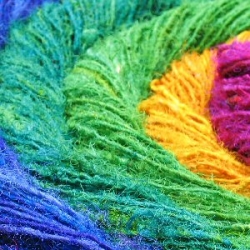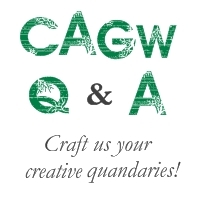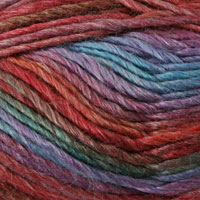Whether you want to upcycle a Mason jar to look like sea glass or alter a window so that it no longer offers a picture-perfect view directly into your bathtub, frosted glass is a beautiful way to make glass opaque while maintaining translucency.
Frosted glass is easy to DIY, and there are a ton of different methods to do it. The easiest method, and the one that I’m going to show you here, is as simple as adding a couple of coats of spray paint to a squeaky clean glass surface.
Here are my two vintage Coca-Cola bottles before being frosted. One I’ve left clear, and the other I’ve already spray painted a color that turned out to be WAY brighter than I wanted. It would be nice if the flower vases didn’t outshine the flowers!
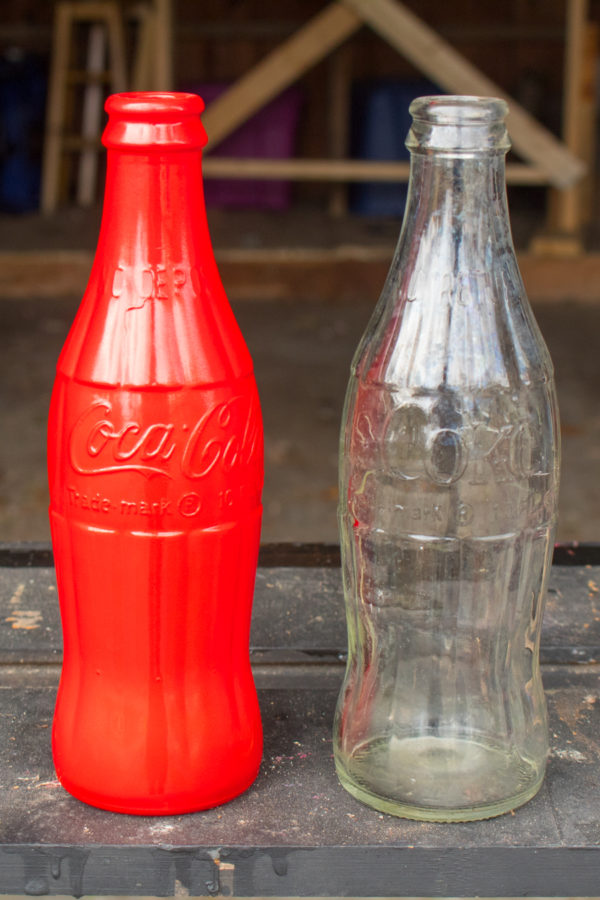
This is for sure a project for making sure that your spray painting technique is on point–it’s very important to hold the spray paint 10-12″ from the object you’re painting, and to coat it with light, overlapping sprays. Here’s the clear glass bottle after one coat of frosted glass spray paint:
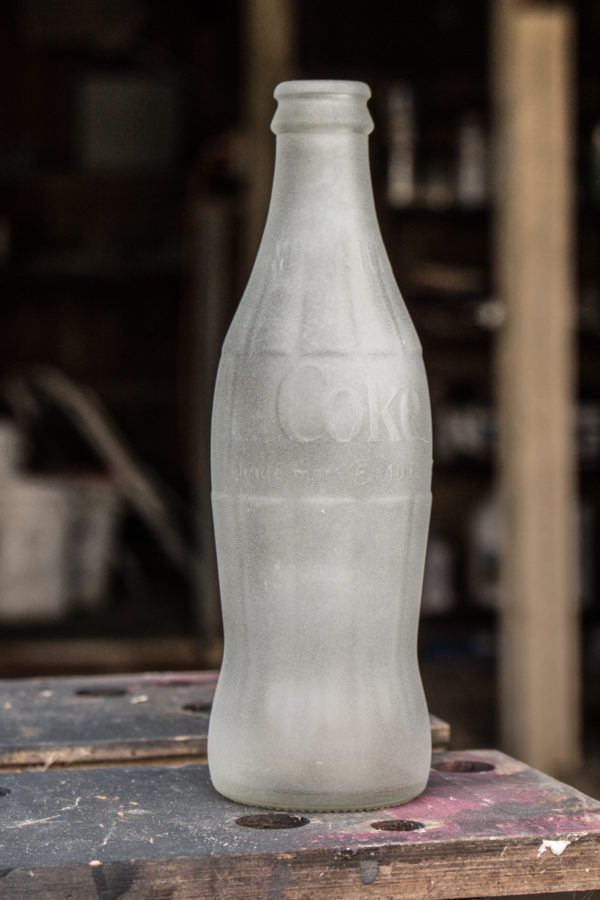
You don’t have to wait any specific time before you can recoat the object, but it takes about ten minutes for the full frosted glass effect to show up, so don’t get too impatient. Here’s my bottle after two coats of frosted glass spray paint:
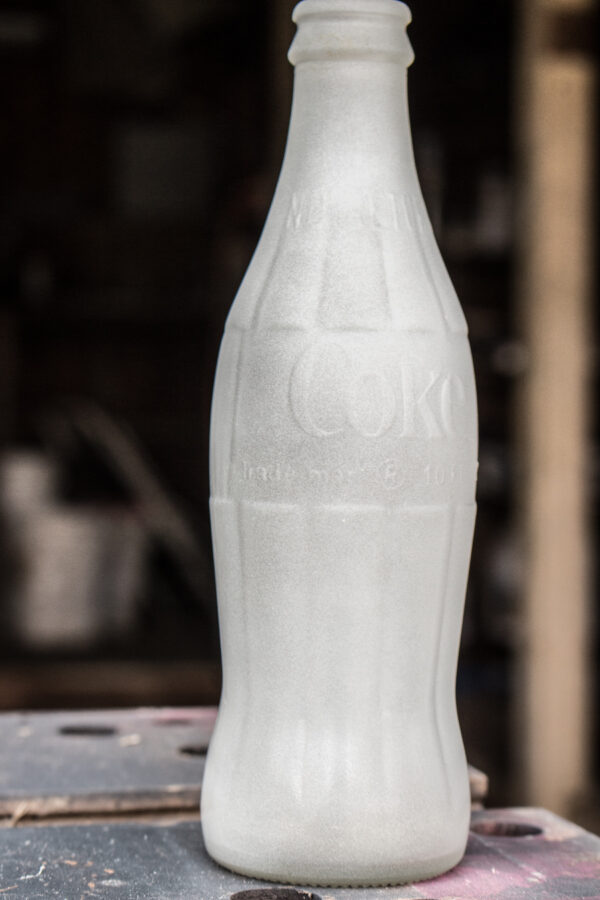
As you’ve gathered, you can use this frosted glass spray paint even on a surface that isn’t already clear, but the result won’t look like frosted glass. Here’s my red bottle after two coats of frosted glass spray paint:
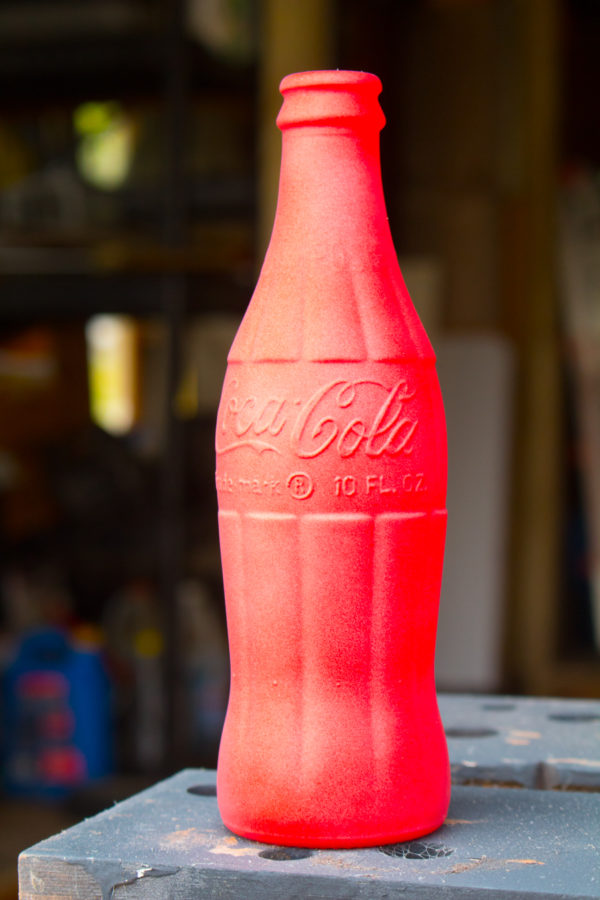
I do really like how the frosted glass paint mutes the shine and saturation of this painted surface–it’s definitely not a look I’d want for everything, but it’s a nice look for a vase for spring flowers.
If spray paint won’t give quite the effect that you want or isn’t suitable for the space that you’re working in, there are fortunately several other methods for frosting glass.
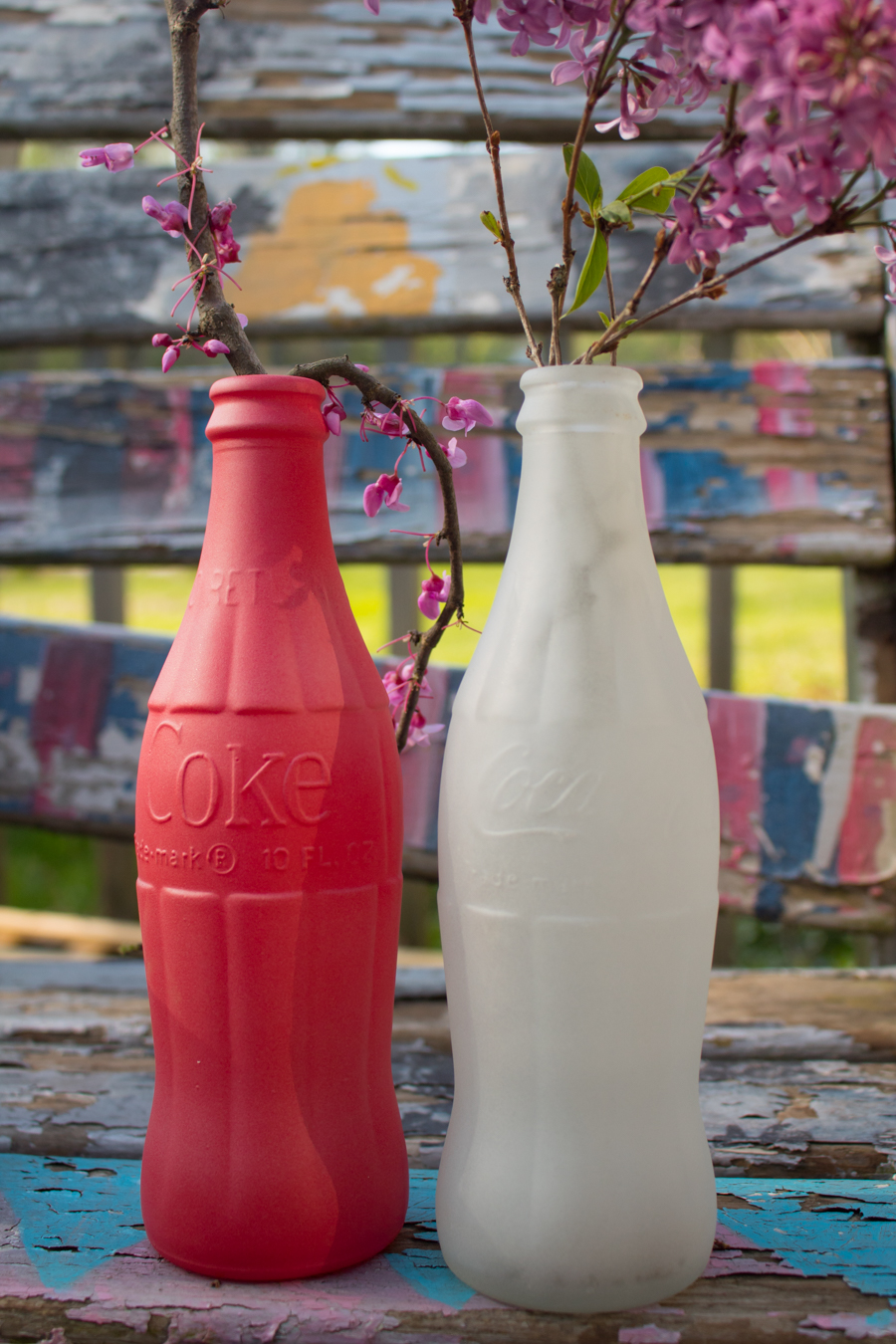
1. Etching Cream
Etching cream is the classic way to frost glass, but the cream is very toxic, so the need to get the glass quickly rinsed and to keep the cream away from other surfaces both limit what you can do with it. The results are highly precise, however, and are permanent, so etching cream is often the material of choice for monogramming glassware, for instance.
2. Mod Podge And Epsom Salts
https://www.instagram.com/p/BcC9SHIDbie/
This is a quite eco-friendly method for frosting glass, and it’s terrific especially for a small, decorative object that won’t be handled often or come into contact with moisture. The Epsom salt adds a LOT of texture and can easily make your piece look snow-covered, so it’s particularly good for winter decorating.
3. Epsom Salts And Dish Soap
Here’s an even more eco-friendly way to frost glass, although remember that the finished product won’t tolerate moisture. It’s great for a temporary installation, however, because it’s so easy to clean up!
4. Mod Podge And Food Coloring
https://www.instagram.com/p/Bm3oxaOgNtj/
This method gives a piece the look of sea glass, but again, keep it away from moisture unless you’ve sealed it.
5. Mod Podge And Glitter
Glitter is far less eco-friendly than Epsom salt, and the look isn’t as authentic, but it’s a workable, quick solution, and you can mitigate some of the negative environmental impact by using eco-friendly glitter.
6. Paint
https://www.instagram.com/p/BG-og1gt4t4/
There are several paint products, other than spray paint, that will give a variety of frosted glass effects. Some require just dabbing on with a sponge, while others need special applicators and several different kinds of paint but offer more elaborate and detailed results.
7. Mirror Effect Spray Paint
You can get an effect that’s very reminiscent of mercury glass by applying mirror effect spray paint, then removing some if it. Instead of a mirror, you’ll have an antique, opaque work of art!
8. Tissue Paper And Cornstarch
This is one of the most eco-friendly methods to frost glass, and it’s also a great choice for covering large areas. You can experiment with using colored tissue paper, but be warned that the dye in colored tissue paper is quite ready to bleed, and will be pretty fiddly to use with your cornstarch glue.
9. Vinyl Or Contact Paper Applique
https://www.instagram.com/p/BF5CK3aMNAC/
Neither vinyl nor contact paper are eco-friendly materials, so they shouldn’t necessarily be anyone’s first choice for frosting glass. However, if it’s a window, door, or other large-scale interior piece that needs to be frosted, vinyl or contact paper can sometimes be the best solution.
As a bonus, both come in a variety of styles that can be very difficult to mimic with other methods. Essentially, if your choice is to use vinyl or contact paper, or to replace your entire piece, then using vinyl or contact paper is likely more energy-efficient and will put less burden on the waste stream.
10. White Paint And A Sponge
This DIY frosted glass is the least translucent and least convincing, but it’s the most likely to call only for materials that you already have on-hand. Use this method for seasonal craft projects!
And now you can join me in being constantly on the lookout for interesting glass pieces to frost!

